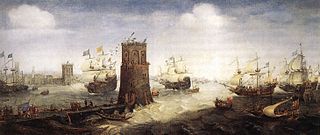 W
WCount Adolf VI of Berg ruled the County of Berg from 1197 until 1218.
 W
WAndrew II, also known as Andrew of Jerusalem, was King of Hungary and Croatia between 1205 and 1235. He ruled the Principality of Halych from 1188 until 1189/1190, and again between 1208/1209 and 1210. He was the younger son of Béla III of Hungary, who entrusted him with the administration of the newly conquered Principality of Halych in 1188. Andrew's rule was unpopular, and the boyars expelled him. Béla III willed property and money to Andrew, obliging him to lead a crusade to the Holy Land. Instead, Andrew forced his elder brother, King Emeric of Hungary, to cede Croatia and Dalmatia as an appanage to him in 1197. The following year, Andrew occupied Hum.
 W
WAubrey was the Archbishop of Reims from 1207 to 1218. He was a warrior prelate, participating in both the Albigensian Crusade of 1209 and the Fifth Crusade. In the latter, he travelled with the Hungarian troops.
 W
WRanulf de Blondeville, 6th Earl of Chester and 1st Earl of Lincoln (1170–1232), known in some references as the 4th Earl of Chester, was one of the "old school" of Anglo-Norman barons whose loyalty to the Angevin dynasty was consistent but contingent on the receipt of lucrative favours. He has been described as "almost the last relic of the great feudal aristocracy of the Conquest".
 W
WDemetrius I from the kindred Csák was a Hungarian baron, who held secular positions during the reign of kings Andrew II and Béla IV.
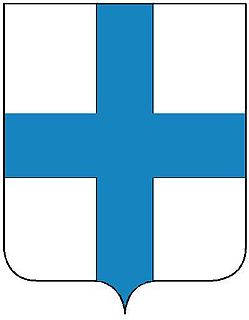 W
WRichard (Riccardo) Filangieri (c.1195–1254/63) was an Italian nobleman who played an important part in the Sixth Crusade in 1228–9 and in the War of the Lombards from 1229–43, where he was in charge of the forces of Frederick II, Holy Roman Emperor, battling forces on the other side, local barons first led by John of Ibelin, the Old Lord of Beirut. During the first half of Filangieri's career he was a Ghibelline, but during the second a Guelph. He was a member of the Filangieri family of Campania.
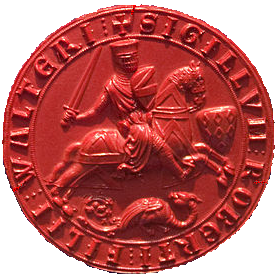 W
WRobert Fitzwalter was the leader of the baronial opposition against King John, and one of the twenty-five sureties of Magna Carta. He was feudal baron of Little Dunmow, Essex and constable of Baynard's Castle, in London, to which was annexed the hereditary office of castellain and chief banneret of the City of London. Part of the official aristocracy created by Henry I and Henry II, he served John in the wars in Normandy, in which he was taken prisoner by King Philip II of France and forced to pay a heavy ransom.
 W
WFrancis of Assisi, venerated as Saint Francis of Assisi, also known in his ministry as Francesco, was an Italian Catholic friar, deacon, mystic, and preacher. He founded the men's Order of Friars Minor, the women's Order of St. Clare, the Third Order of St. Francis and the Custody of the Holy Land. Francis is one of the most venerated religious figures in Christianity.
 W
WFrederick II was King of Sicily from 1198, King of Germany from 1212, King of Italy and Holy Roman Emperor from 1220 and King of Jerusalem from 1225. He was the son of emperor Henry VI of the Hohenstaufen dynasty and Queen Constance of Sicily of the Hauteville dynasty.
 W
WGuillaume II Amanieu de Genève, Archbishop of Bordeaux (1207-1227) and Seneschal of Gascony (1217-1218) was a 13th century French noble.
 W
WGuillaume de Chartres, was a grand master of the Knights Templar from 1210 – 26 August 1218.
 W
WHadmar II of Kuenring was an Austrian ministerialis of the Kuenring family and son of Albero III of Kuenring. In 1192 he held captive Richard the Lionheart, King of England, at Dürnstein Castle.
 W
WBuzád II Hahót, O.P., also Buzád the Great or the Elder, was a Hungarian nobleman and soldier, who served as the first known Ban of Severin. He later gave up his position in society and entered the Dominican Order.
 W
WHenry I, of the house of Millau, was the Count of Rodez and Viscount of Carlat from 1208 until his death. He was the son and successor of Hugh II. His mother was Bertrande d'Amalon.
 W
WHenry I, Count of Schwerin, also known as Henry the Black, was a German nobleman. He was a ruling Count of Schwerin and played an important role in the ending of the Danish supremacy in the southern coast of the Baltic Sea.
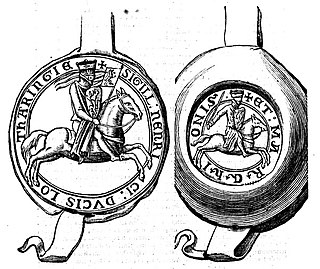 W
WHenry I, named "The Courageous", was a member of the House of Reginar and first duke of Brabant from 1183/84 until his death.
 W
WHenry IV was the duke of Limburg and count of Berg from 1226 to his death. He was the son of Waleran III, count of Luxembourg and duke of Limburg, and Cunigunda, daughter of Frederick I, Duke of Lorraine.
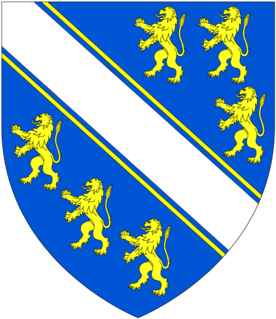 W
WHenry de Bohun, 1st Earl of Hereford of Pleshy Castle in Essex, was an Anglo-Norman nobleman who became Hereditary Constable of England from 1199.
 W
WHerman V, Margrave of Baden ruled Verona and Baden from 1190 until his death.
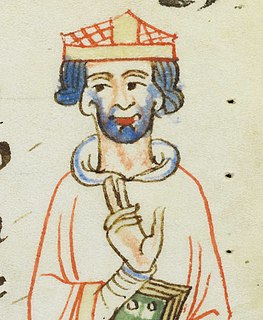 W
WPope Honorius III, born Cencio Savelli, was head of the Catholic Church and ruler of the Papal States from 18 July 1216 to his death. A canon at the Basilica di Santa Maria Maggiore, he came to hold a number of important administrative positions, including that of Camerlengo. In 1197, he became tutor to the young Frederick II. As pope, he worked to promote the Fifth Crusade, which had been planned under his predecessor, Innocent III. Honorius repeatedly exhorted King Andrew II of Hungary and Emperor Frederick II to fulfill their vows to participate. He also gave approval to the recently formed Dominican and Franciscan religious orders.
 W
WHugh I succeeded to the throne of Cyprus on 1 April 1205 underage upon the death of his elderly father Aimery, King of Cyprus and Jerusalem. His mother was Eschiva of Ibelin, heiress of that branch of Ibelins who had held Bethsan and Ramleh.
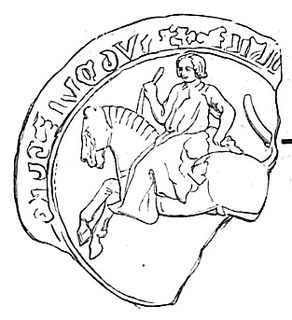 W
WHugh IX "le Brun" of Lusignan was the grandson of Hugh VIII. His father, also Hugh, was the co-seigneur of Lusignan from 1164, marrying a woman named Orengarde before 1162 or about 1167 and dying in 1169. Hugh IX became seigneur of Lusignan in 1172, seigneur of Couhé and Chateau-Larcher in the 1190s, and Count of La Marche on his grandfather's death. Hugh IX died on the Fifth Crusade at the siege of Damietta on 5 November 1219.
 W
WHugh X de Lusignan, Hugh V of La Marche or Hugh I of Angoulême succeeded his father Hugh IX as Seigneur de Lusignan and Count of La Marche in November 1219 and was Count of Angoulême by marriage.
 W
WHugues IV de Berzé was a knight and trouvère from the Mâconnais. He participated in the Fourth Crusade in 1201 and the Fifth Crusade in 1220. He was the lord of Berzé-le-Châtel.
 W
WWilliam of Huntingfield was a medieval English baron, Sheriff of Norfolk and Suffolk and one of the Magna Carta sureties.
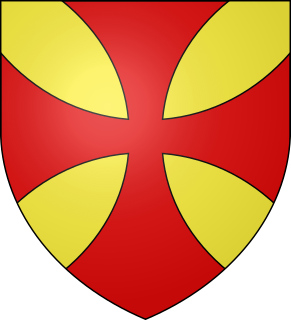 W
WHugh of Ibelin, called the Strong, was the third of five sons of John I of Beirut. He and his elder brother Balian were hostages at the court of Frederick II, Holy Roman Emperor, in 1228–1229. He led the first battaile at the Battle of Agridi in 1232 and thus withstood the brunt of the enemy charge. He was dead by 1238. In April 1239, Henry I of Cyprus had a mass said in his name at Nicosia.
 W
WPope Innocent III (Latin: Innocentius III; 1160 or 1161 – 16 July 1216, born Lotario dei Conti di Segni was the head of the Catholic Church and ruler of the Papal States from 8 January 1198 to his death.
 W
WJacques de Vitry was a French canon regular who was a noted theologian and chronicler of his era. He was elected bishop of Acre in 1214 and made cardinal in 1229. His Historia Orientalis is an important source for the historiography of the Crusades.
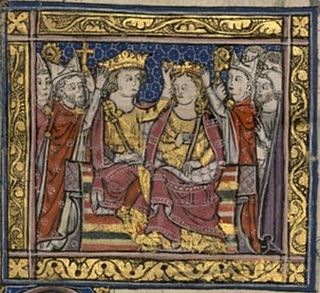 W
WJohn of Brienne, also known as John I, was King of Jerusalem from 1210 to 1225 and Latin Emperor of Constantinople from 1229 to 1237. He was the youngest son of Erard II of Brienne, a wealthy nobleman in Champagne. John, originally destined for an ecclesiastical career, became a knight and owned small estates in Champagne around 1200. After the death of his brother, Walter III, he ruled the County of Brienne on behalf of his minor nephew Walter IV.
 W
WLadislaus I from the kindred Kán was a powerful Hungarian baron, who held several secular positions during the reign of kings Andrew II and Béla IV.
 W
WLeopold VI, known as Leopold the Glorious, was the duke of Styria from 1194 and the duke of Austria from 1198 to his death in 1230. He was a member of the House of Babenberg. Like his predecessors, he attempted to develop the land by founding monasteries. His most important foundation is Lilienfeld in the Lower Austrian valley of the Traisen river, where he was buried after his death. Besides that, he supported the then highly modern mendicant orders of the Franciscans and Dominicans.
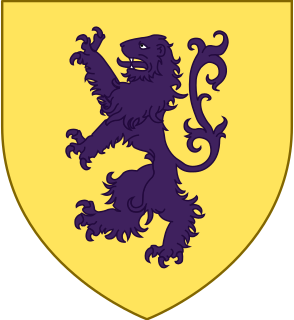 W
WJohn de Lacy, 2nd Earl of Lincoln was hereditary Constable of Chester, 7th Baron of Pontefract, 8th Baron of Halton and 8th Lord of Bowland.
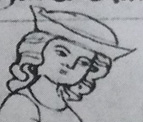 W
WLouis IV the Saint, a member of the Ludovingian dynasty, was Landgrave of Thuringia and Saxon Count palatine from 1217 until his death. He was the husband of Saint Elizabeth of Hungary.
 W
WMatthias II was Duke of Lorraine from 1220 to his death. He was the son of Duke Frederick II and Agnes of Bar and succeeded his brother, Theobald I.
 W
WSavari de Mauléon was a French soldier, the son of Raoul de Mauléon, Viscount of Thouars and Lord of Mauléon.
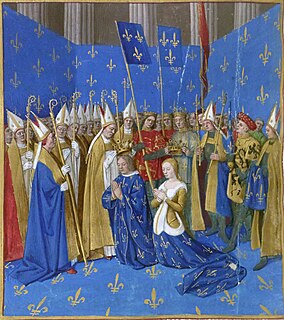 W
WMilo of Nanteuil was a warrior, crusader, and Bishop of Beauvais from 1218 to 1234. From 1207 to 1217 he was provost of the Cathedral of Reims. He was the fourth son of Gaucher I of the House of Châtillon who had established a branch of that family centered on the legacy of his wife, Nanteuil-la-Fosse. He combined an ambitious pursuit of ecclesiastical office with military service in Italy on behalf of the Pope, participation in the Fifth Crusade, building of Beauvais Cathedral, and patronage of Jean Renart.
 W
WPeire de Montagut was Grand Master of the Knights Templar from 1218 to 1232. He took part in the Fifth Crusade and was against the Sultan of Egypt's conditions for raising the siege of Damietta. He was previously Master of the Crown of Aragon.
 W
WPierre Guérin de Montaigu was a nobleman from Auvergne, who became the 13th Grand Master of the Knights Hospitaller, in 1207–28.
 W
WEudes III, commonly known in English as Odo III, was duke of Burgundy between 1192 and 1218. Odo was the eldest son of duke Hugh III and his first wife Alice, daughter of Matthias I, Duke of Lorraine.
 W
WWilbrand of Oldenburg was a bishop of Paderborn and of Utrecht.
 W
WOtto of Lippe was a son of Bernhard II, Lord of Lippe. He was bishop of Utrecht as Otto II from 1216 to 1227. Several of his brothers also held high ecclesiastical offices in the Rhineland.
 W
WPhilip II, byname Philip Augustus, was King of France from 1180 to 1223. His predecessors had been known as kings of the Franks, but from 1190 onward, Philip became the first French monarch to style himself "King of France". The son of King Louis VII and his third wife, Adela of Champagne, he was originally nicknamed Dieudonné (God-given) because he was a first son and born late in his father's life. Philip was given the epithet "Augustus" by the chronicler Rigord for having extended the crown lands of France so remarkably.
 W
WPons de Capduelh was a troubadour from the Auvergne, probably from Chapteuil. His songs were known for their great gaiety. He was a popular poet and 27 of his songs are preserved, some in as many as 15 manuscripts. Four of his cansos survive with musical notation.
 W
WRoger de Quincy, 2nd Earl of Winchester, hereditary Constable of Scotland, was a nobleman of Anglo-Norman and Scottish descent who was prominent in both England and Scotland, at his death having one of the largest baronial landholdings in the two kingdoms.
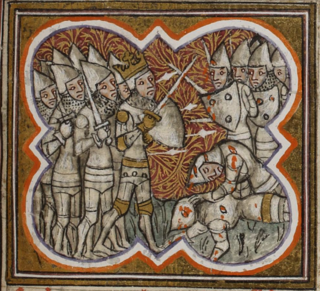 W
WRaoul I of Lusignan was the second son of Hugh de Lusignan and the grandson of Hugh VIII of Lusignan. He was a prominent nobleman in the region of Poitou, and lord (seigneur) d'Exoudun, de Melle, de Chizé, de Civray and de La Mothe. He also became Count of Eu, by marriage to Alix d'Eu. Since the region of Poitou was contested between kings of France and England, local nobility was often changing sides. Up to 1201, Raoul was loyal to kings of England, but than changed his allegiance to king of France. He later rejoined the English side, and took part in the Battle of Bouvines (1214). For his services to the king England, he was granted possession of Hastings and Tickhill, in 1216. Earlier, he participated, as a young knight, in the Third Crusade, and later again in the Fifth Crusade, and died upon return. He was buried at the Priory of Fontblanche, in Exoudun.
 W
WRenaud de Pons was a nobleman from the Saintonge. He served as Seneschal of Gascony between 1214 and 1217 and briefly as Seneschal of Poitou in 1216. He went on the Fifth Crusade in 1217–21. He and his nephew, Renaud II de Pons, are distinguished in contemporary documents by the epithets senior and iunior. He is also known by the epithet Palmarius because he was a crusader.
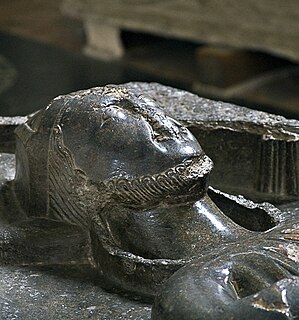 W
WPeter des Roches was bishop of Winchester in the reigns of King John of England and his son Henry III. He was not an Englishman, but rather a native of the Touraine, in north-central France.
 W
WHermann von Salza was the fourth Grand Master of the Teutonic Knights, serving from 1210 to 1239. A skilled diplomat with ties to the Holy Roman Emperor and the Pope, Hermann oversaw the expansion of the military order into Prussia.
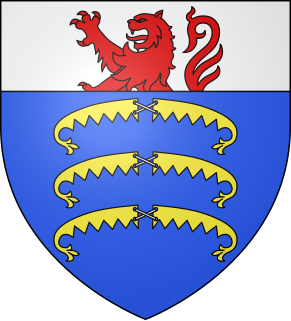 W
WSimon of Joinville was a French knight, who became the Lord of Joinville from 1204 until his death in 1233. He was also the hereditary seneschal of the County of Champagne.
 W
WFederico Vanga was Prince-Bishop of Trento from August 9, 1207 until his death.
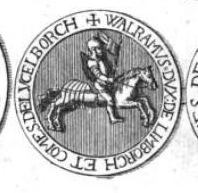 W
WWaleran III was initially lord of Montjoie, then count of Luxembourg from 1214. He became count of Arlon and duke of Limburg on his father's death in 1221. He was the son of Henry III of Limburg and Sophia of Saarbrücken.
 W
WWalter III, sometimes called Walter de Brisebarre or Walter Grenier, was the Constable of the Kingdom of Cyprus from 1206 and Lord of Caesarea in the Kingdom of Jerusalem from 1216. He was the eldest son of Juliana Grenier, Lady of Caesarea, and Guy de Brisebarre. Since he was witnessing royal charters by 1195, he must have been born no later than 1180. In the 1220s he was generally referred to as "the old lord of Caesarea", although probably only in his fifties. He took part in two Crusades and in two civil wars on the side of the House of Ibelin.
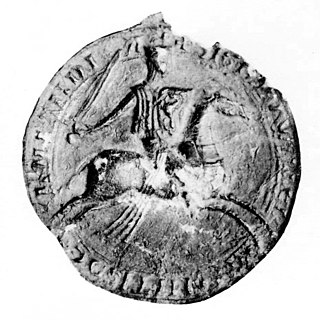 W
WWilliam I was the count of Holland from 1203 to 1222. He was the younger son of Floris III and Ada of Huntingdon.
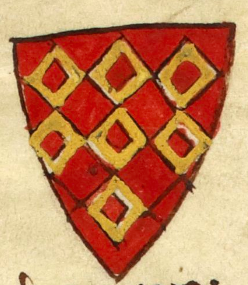 W
WSaer de Quincy, 1st Earl of Winchester was one of the leaders of the baronial rebellion against John, King of England, and a major figure in both the kingdoms of Scotland and England in the decades around the turn of the twelfth and thirteenth centuries.